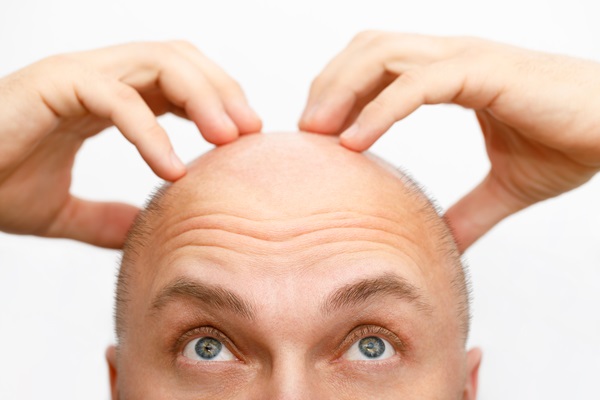What Is Involved in a Hair Graft

A hair graft procedure is a great way to restore a full head of hair after loss occurs, and this procedure works well for minimal and severe hair loss. In this review, we define the term “hair graft” and discuss the steps involved in this procedure.
What is a hair graft?
A hair graft, also called a hair transplant, is a surgical procedure that moves hair from one area of the scalp to another area that has experienced hair loss or thinning. There are two primary types of hair transplants: follicular unit extraction (FUE) and follicular unit transplantation (FUT). Here are the differences:
- An FUT, also called the strip method, involves removing a long strip of hair from the back of the scalp, separating the follicles, and then transplanting them
- An FUE involves individually extracting hair follicles one by one and then transplanting them to the bald region
What steps are involved in a hair graft?
The steps involved in the hair graft process mainly depend on the type of hair graft procedure that the patient chooses and the number of hair grafts that must be transplanted. The general steps for a hair graft procedure are as follows.
Step 1: The consultation visit
A hair graft procedure requires a fair amount of planning and personalization. There are no cookie-cutter approaches that work. Instead, the surgeon must evaluate each case individually. This is what occurs during the first visit (consultation). The surgeon and their staff will determine:
- The number of grafts needed
- The location of each graft
- The treatment schedule
This information also determines the cost of the procedure. The surgeon and the patient can discuss the price and payment options during the consultation. This visit also enables the patient to determine if treatment is right for them. They can ask any questions about their hair loss and treatment options. Ultimately, a second visit will be scheduled to start the treatment process.
Step 2: The donor graft extraction
The donor site is where hair follicles are removed before transplantation onto the implant site. This is usually in an area where there is a large amount of hair, usually the back or side of the scalp. Hair can be taken from other areas, but this is far less common.
Donor graft extraction differs depending on whether it is an FUE or FUT procedure. For an FUE procedure, hair follicles are removed one at a time, which reduces the risk of scarring, redness, and swelling at the donor site. For an FUT procedure, a strip of hair follicles is removed at once, and they are then removed from the strip.
Step 3: Graft preservation
The grafts are immediately preserved as they are removed. The preservation process involves cleaning them, sorting them, and submerging them in a plasma solution. The grafts are usually refrigerated until they are placed on the implant site.
Step 4: The implant process
The last step in the hair graft process is implantation. This involves grafting the hairs onto the bald or thinning areas. This is done one at a time through a careful process until all grafts are successfully implanted where they should be.
This entire procedure is surgical and does require the use of anesthesia to ensure that it is a painless process for the patient. They may experience swelling and minimal pain when they wake up. The surgeon should provide aftercare instructions to help the patient prevent infection or excessive discomfort.
Step 5: Post-surgery care
The surgeon should provide a list of aftercare instructions to follow. These help ensure that pain and other symptoms are minimal. A proper aftercare plan also helps ensure successful results. It typically entails keeping the donor and implantation areas clean. It is also important to avoid irritating the area, which requires not touching it and avoiding sunlight exposure, among other care techniques. A follow-up visit is required to ensure that there are no complications and to check on the progress.
Are you considering a hair graft procedure?
Here at our office, we help patients regain their lost hair with hair graft treatments. If you are interested in learning more about treatment or are ready to get started, contact us today. We can help you schedule an appointment with our hair doctor at a time that is convenient for you. You should also feel free to ask any questions that you may have or voice any concerns. We would be happy to help in any way that we can!
Get more information here: http://dillonhair.com or call Dillon Hair Restoration at (800) 518-9307
Check out what others are saying about our services on Yelp: Hair Graft in Schaumburg, IL.
Recent Posts
Hair loss can usher in mixed emotions and damper your self-esteem, whether or not you were expecting the day. Fortunately, hair plugs or grafts can provide patients with a full head of their natural hair. If thinning or balding is something you are experiencing right now, help is available at our Schaumburg office. First, review…
Hair thinning treatments are far more versatile than they get credit for. Our team works closely with each patient to determine the root cause of their thinning tresses and craft an effective treatment plan. Take a closer look at common causes of hair thinning and the various methods we can use to treat it.Many factors…
Hair loss can significantly impact people, affecting their self-confidence and interpersonal relationships. Fortunately, hair grafting, also known as hair transplantation, provides a viable option to restore the natural hairline. If you are still deciding whether to pursue a hair graft, here are three reasons to consider it.Unlike temporary solutions like wigs or hairpieces, a hair…
For those with wrinkled skin, Botox® injections can provide great relief. While it may be a natural sign of aging, the presence of wrinkles can be frustrating to some. Thanks to the scientific research and testing in the 1990s by several dermatologists, Botox® was approved in 2002 by the Food and Drug Administration for cosmetic…


